By Bart Elmore
In the 1960s, Coca-Cola had a cocaine problem. This might seem odd, since the company removed cocaine from its formula around 1903, bowing to Jim Crow fears that the drug was contributing to black crime in the South. But even though Coke went cocaine-free in the Progressive Era, it continued to purchase coca leaves from Peru, removing the cocaine from the leaves but keeping what was left over as a flavoring extract. By the end of the twentieth century it was the single largest purchaser of legally imported coca leaves in the United States.
Yet, in the 1960s, Coke feared that an international counternarcotics crackdown on cocaine would jeopardize their secret trade with Peruvian cocaleros, so they did a smart thing: they began growing coca in the United States. With the help of the US government, a New Jersey chemical firm, and the University of Hawaii, Coca-Cola launched a covert coca operation on the island of Kauai. In 1965, growers in the Pacific paradise reported over 100 shrubs in cultivation.
How did this bizarre Hawaiian coca operation come to be? How, in short, did Coca-Cola become the only legal buyer of coca produced on US soil? The answer, I discovered, had to do with the company’s secret formula: not it’s unique recipe, but its peculiar business strategy for making money—what I call Coca-Cola capitalism.
What made Coke one of the most profitable firms of the twentieth century was its deftness in forming partnerships with private and public sector partners that helped the company acquire raw materials it needed at low cost. Coca-Cola was never really in the business of making stuff; it simply positioned itself as a kind of commodity broker, channeling ecological capital between producers and distributors, generating profits off the transaction. It thrived by making friends, both in government and in the private sector, friends that built the physical infrastructure and technological systems that produced and transported the cheap commodities needed for mass-marketing growth.
In the case of coca leaf, Coca-Cola had the Stepan chemical company of Maywood, New Jersey, which was responsible for handling Coke’s coca trade and “decocainizing” leaves used for flavoring extract (the leftover cocaine was ultimately sold to pharmaceutical firms for medicinal purposes). What Coke liked about its relationship with Stepan was that it kept the soft drink firm out of the limelight, obfuscating its connection to a pesky and tabooed narcotics trade.
But Stepan was just part of the procurement puzzle. The Federal Bureau of Narcotics (FBN) also played a pivotal role in this trade. Besides helping to pilot a Hawaiian coca farm, the US counternarcotics agency negotiated deals with the Peruvian government to ensure that Coke maintained access to coca supplies. The FBN and its successor agencies did this even while initiating coca eradication programs, tearing up shrubs in certain parts of the Andes in an attempt to cut off cocaine supply channels. By the 1960s, coca was becoming an enemy of the state, but only if it was not destined for Coke.
In short, Coca-Cola—a company many today consider a paragon of free-market capitalism—relied on the federal government to get what it wanted.
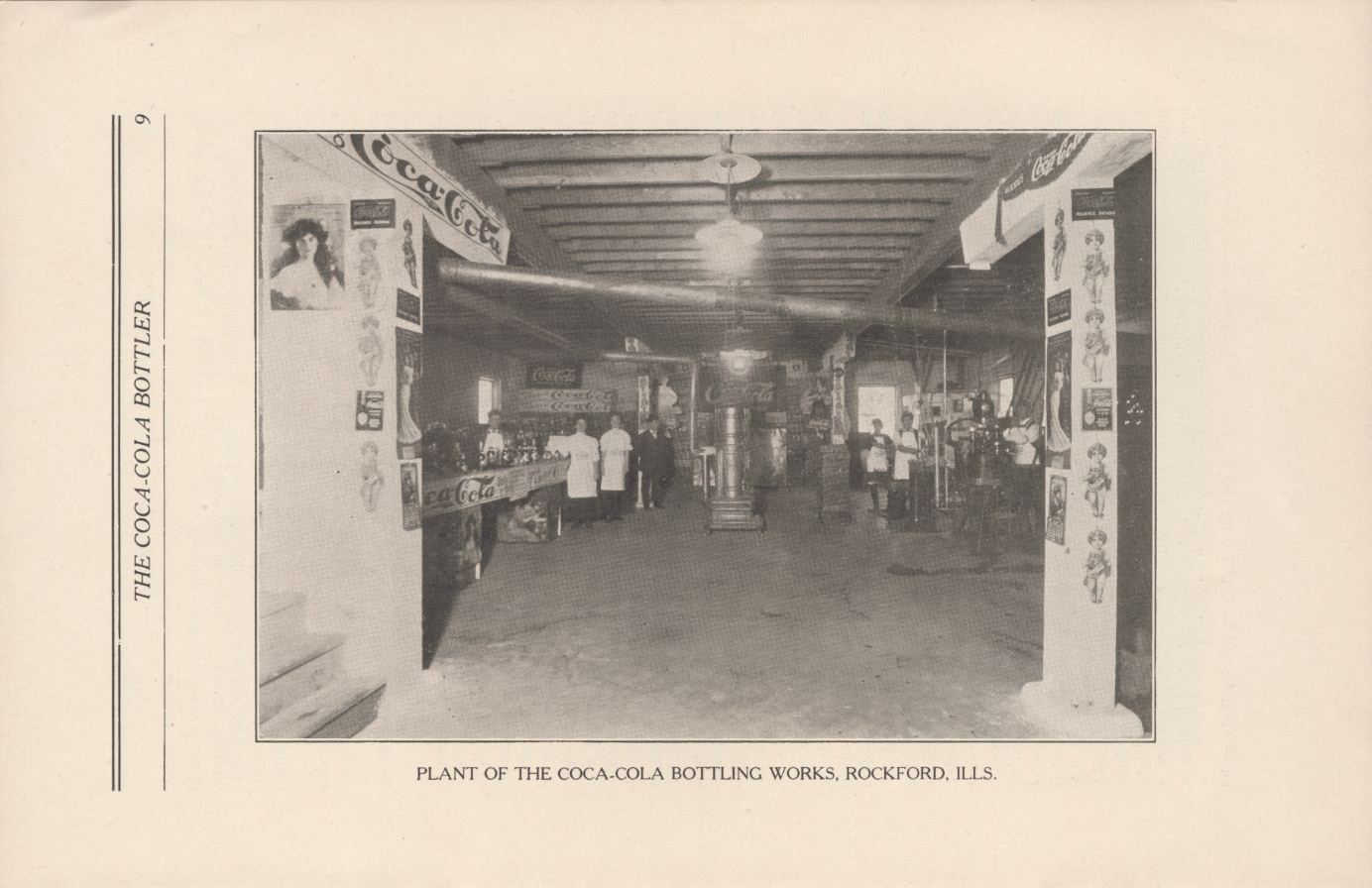
An old Coca-Cola bottling plant showing some of the municipal pipes that these bottlers tapped into. Courtesy of Bart Elmore.
Coke’s public partnerships extended to other ingredients. Take water, for example. For decades, the Coca-Cola Company relied on hundreds of independently owned bottlers (over 1,000 in 1920 alone) to market its products to consumers. Most of these bottlers simply tapped into the tap to satiate Coke’s corporate thirst, connecting company piping to established public water systems that were in large part built and maintained by municipal governments.
The story was much the same for packaging materials. Beginning in the 1980s, Coca-Cola benefited substantially from the development of curbside recycling systems paid for by taxpayers. Corporations welcomed the government handout, because it allowed them to expand their packaging production without taking on more costs. For years, environmental activists had called on beverage companies to clean up their waste. In fact, in 1970, 22 US congressmen supported a bill that would have banned the sale of nonreturnable beverage containers in the United States. But Congress, urged on by corporate lobbyists, abandoned the plan in favor of recycling programs paid for by the public. In the end, Coke and its industry partners were direct beneficiaries of the intervention, utilizing scrap metal and recycled plastic that was conveniently brought to them courtesy of municipal reclamation programs.
In all these interwoven ingredient stories there was one common thread: Coke’s commitment to outsourcing and franchising. The company consistently sought a lean corporate structure, eschewing vertical integration whenever possible. All it did was sell a concentrated syrup of repackaged cheap commodities. It did not own sugar plantations in Cuba (as the Hershey Chocolate Company did), coca farms in Peru, or caffeine processing plants in New Jersey, and by not owning these assets, the company remained nimble throughout its corporate life. It found creative ways to tap into pipes, plantations, and plants managed by governments and other businesses.
In the end, Coca-Cola realized that it could do more by doing less, extending its corporate reach, both on the frontend and backend of its business, by letting other firms and independent bottlers take on the risky and sometimes unprofitable tasks of producing cheap commodities and transporting them to consumers.
This strategy for doing business I have called Coca-Cola capitalism, so-named because Coke modeled it particularly well, but there were many other businesses, in fact some of the most profitable of our time, that followed similar paths to big profits. Software firms, for example, which sell a kind of information concentrate, have made big bucks by outsourcing raw material procurement responsibilities. Fast food chains, internet businesses, and securities firms—titans of twenty-first century business—have all demonstrated similar proclivities towards the Coke model of doing business.
Thus, as we look to the future, we would do well to examine why Coca-Cola capitalism has become so popular in the past several decades. Scholars have begun to debate the causes of a recent trend toward vertical disintegration, and while there are undoubtedly many causes for this shift, it seems ecological realities need to be further investigated. After all, one of the reasons Coke chose not to own commodity production businesses was because they were both economically and ecologically unsustainable over the long term. Might other firms divestment from productive industries tied to the land be symptomatic of larger environmental problems associated with extending already stressed commodity networks? This is a question we must answer as we consider the prudence of expanding our current brand of corporate capitalism in the years ahead.
Bart Elmore is an assistant professor of global environmental history at the University of Alabama. He is the author of “Citizen Coke: An Environmental and Political History of the Coca-Cola Company” (available to read for free for a limited time) in Enterprise and Society. His forthcoming book, Citizen Coke: The Making of Coca-Cola Capitalism, is due out with W. W. Norton in November of 2014.
Enterprise & Society offers a forum for research on the historical relations between businesses and their larger political, cultural, institutional, social, and economic contexts. The journal aims to be truly international in scope. Studies focused on individual firms and industries and grounded in a broad historical framework are welcome, as are innovative applications of economic or management theories to business and its context.
Subscribe to the OUPblog via email or RSS.
Subscribe to only American history articles on the OUPblog via email or RSS.
The post What Coke’s cocaine problem can tell us about Coca-Cola Capitalism appeared first on OUPblog.

Image, branding, and logos are obsessions of our age. Iconic images dominate the media. In his new book, Christ to Coke, art historian Professor Martin Kemp examines eleven mega-famous examples of icons, including the American flag, the image of Christ's face, the double helix of DNA, and the heart.

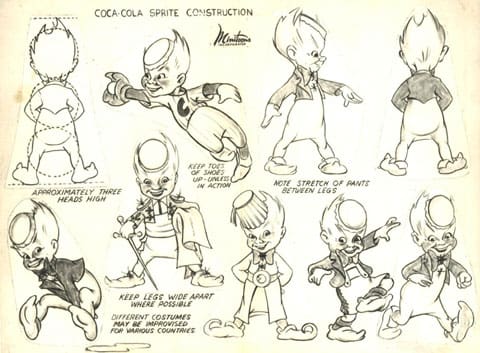
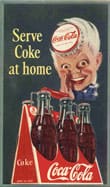 You never know where you’ll find animation history. The Coca-Cola website has just posted this obscure model sheet of their Sprite Boy mascot of the 1950s, for a proposed animated theatrical commercial. Click on image above for larger picture. The Coca-Cola Company used this character in its advertising in the 40’s and 50’s (see left). He was conceived by the soft-drink staff artist, Haddon Sundblom, famed pulp cover painter and pin-up artist who created the Coke’s version of a Santa Claus. The model sheet is labeled “Minitoons” which I believe may have been Walter Lantz’ title for a series of Coca-Cola theatrical spots. No cartoon featuring this character has ever surfaced – but interesting, huh?
You never know where you’ll find animation history. The Coca-Cola website has just posted this obscure model sheet of their Sprite Boy mascot of the 1950s, for a proposed animated theatrical commercial. Click on image above for larger picture. The Coca-Cola Company used this character in its advertising in the 40’s and 50’s (see left). He was conceived by the soft-drink staff artist, Haddon Sundblom, famed pulp cover painter and pin-up artist who created the Coke’s version of a Santa Claus. The model sheet is labeled “Minitoons” which I believe may have been Walter Lantz’ title for a series of Coca-Cola theatrical spots. No cartoon featuring this character has ever surfaced – but interesting, huh?
(Thanks, Devlin Thompson)
Cartoon Brew: Leading the Animation Conversation |
Permalink |
No comment |
Post tags: Coke
 Guitar Hero Worship (the far reaching impact of the groundbreaking video game. Plus, Ridemakerz the car customization and racing world for tween boys goes live. And, in case you missed it Girl Wars, like Mob Wars but with frilly accessories,... Read the rest of this post
Guitar Hero Worship (the far reaching impact of the groundbreaking video game. Plus, Ridemakerz the car customization and racing world for tween boys goes live. And, in case you missed it Girl Wars, like Mob Wars but with frilly accessories,... Read the rest of this post
 Hello, all, it is I, Sir William the Terrible, otherwise known to both friends and fowls (that's a joke son, a joke I say) as Darth Bill. Well, I hope everyone is doing most excellently out there in the Land of Blog. I did a program Tuesday at the library about "Sir Gawain and the Green Knight," in which I basically told my version of the story. Afterwards, all who attended picked peep champions to fight it out on "The Jousting Field of Glory" (otherwise known as a plate put into a microwave). The story was a lot of fun to tell, since it is one of my favorite Arthurian Tales, but even more fun was the peep jousting. Now if you have never heard of peep jousting, you are in for a treat. What peep jousting involves is putting two Easter Peeps, each equipped with a trusty tooth pick (pushed into each peep), facing each other onto a plate and then into a microwave. The peeps will expand in the microwave and the first peep to stick the opposing peep with a tooth pick is the winner. Think I'm crazy? Well, crazy like a fox,--check out these photos from the "Mighty Peep Jousting" Event (boy I sure do like putting things in bold don't I):
Hello, all, it is I, Sir William the Terrible, otherwise known to both friends and fowls (that's a joke son, a joke I say) as Darth Bill. Well, I hope everyone is doing most excellently out there in the Land of Blog. I did a program Tuesday at the library about "Sir Gawain and the Green Knight," in which I basically told my version of the story. Afterwards, all who attended picked peep champions to fight it out on "The Jousting Field of Glory" (otherwise known as a plate put into a microwave). The story was a lot of fun to tell, since it is one of my favorite Arthurian Tales, but even more fun was the peep jousting. Now if you have never heard of peep jousting, you are in for a treat. What peep jousting involves is putting two Easter Peeps, each equipped with a trusty tooth pick (pushed into each peep), facing each other onto a plate and then into a microwave. The peeps will expand in the microwave and the first peep to stick the opposing peep with a tooth pick is the winner. Think I'm crazy? Well, crazy like a fox,--check out these photos from the "Mighty Peep Jousting" Event (boy I sure do like putting things in bold don't I):
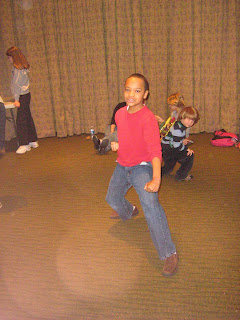 Mighty Peep Jousters warming up for Battle!!!!! To become a Master Peep Jouster one must become one with the Peep, so say the great masters!!!!!
Mighty Peep Jousters warming up for Battle!!!!! To become a Master Peep Jouster one must become one with the Peep, so say the great masters!!!!!
Hiiiii-Yaaaaaaaaaa!!!!!!!!

Peeps on the great "Jousting Field" prior to Battle - otherwise known as "The Great Face Off!!!!!!!"
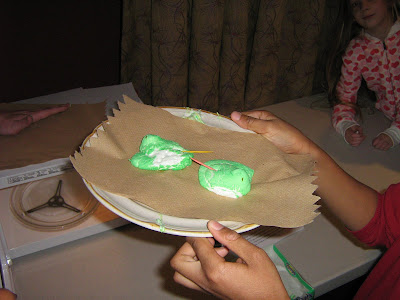
The terrible, awful and sad sight of melted peeps after battle most savage ): It appears the victor in this terrible battle is the peep with the reddish toothpick.
All Hail the Conquering Hero!!!!!!
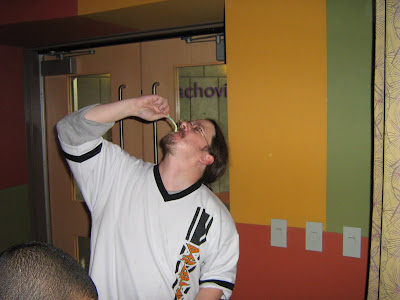
Sir William the Terrible eating one of the poor melted peeps after it has been wounded beyond all hope of healing (it really was the most humane thing to do).
WARNING: To all out there thinking of eating melted peeps, please make sure they have had time to properly cool before doing so. Otherwise a burnt mouth could ensue and that is a big Ouchy!!!!!!!!!!!!
To see some peep jousting in all its real life glory, take a look at this YouTube video: http://www.youtube.com/watch?v=JBBzTvlTuGw.
Pretty incredible wouldn't you say? This sport has changed my life!!!!!!!!!
And now for something completely different, book reviews by Sir William the Terrible:
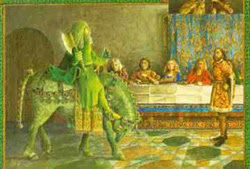 Sir Gawain and the Green Knight by Selina Hastings and Juan Wijngaard - This is not exactly a new book but it is an excellent adaption of the "Sir Gawain and the Green Knight" tale from Arthurian Legend. This story is about a young Sir Gawain of King Arthur's Knights of the Round Table and how his courage and sense of chivalry is tested by the eerie Green Knight. Here is an excerpt from the story to wet your taste buds:
Sir Gawain and the Green Knight by Selina Hastings and Juan Wijngaard - This is not exactly a new book but it is an excellent adaption of the "Sir Gawain and the Green Knight" tale from Arthurian Legend. This story is about a young Sir Gawain of King Arthur's Knights of the Round Table and how his courage and sense of chivalry is tested by the eerie Green Knight. Here is an excerpt from the story to wet your taste buds:
'A noble opponent indeed!' exclaimed the Green Knight, dismounting from his horse. 'Sir Gawain, you must swear that in exactly one year and a day you will seek me out and allow me to return your blow.'
'I give you my word,' said Gawain.
Then the Green Knight knelt at Gawain’s feet, bowing his head so that the neck was plainly exposed. Gawain lifted the axe up high and brought it whistling down, severing the Knight’s head cleanly from his shoulders.
The head rolled on the floor, blood spurting from the wound, but the Knight never faltered. Rising to his feet, he picked up his head and, tucking it under his arm, swung himself up into the saddle.
As he passed Gawain, the head turned and regarded him solemnly. 'Remember your promise, Gawain. Meet me at the Green Chapel in one year and a day.’ Then spurring his horse, the Green Knight galloped out of the hall.
Pretty cool, huh!!!!! Give this book a chance as it rocks in a major way!!!!!!
 Satchel Paige: Striking Out Jim Crow by James Sturm & Rich Tommaso – This is really an outstanding graphic novel about a fictional black family, primarily occurring in the early to mid 1940s, and the dangers and extreme bigotry they and other African Americans suffered during this time period in primarily the Southern United States. It is also a history of the Negro National Baseball League and some of the outstanding men who played for the League, Satchel Paige being one of its biggest stars. The father in the story is a sharecropper who works under a very unkind pair of white twins. The father tries his best to improve things for his son and show him that African Americans are just as good as White Americans. However because of the time period and many ugly practices that are allowed to take place in that part of the U.S., he has a hard time doing so and becomes full of anger. Things between blacks and whites really come to a head when the hometown baseball team, the all White Tuckwilla All-Stars, take on Satchel Paige’s all Black All-Star Team. This book really does a great job of taking a picture of a time long past in American History and the people who lived in it. It also includes a preface that talks extensively about Satchel Paige and an end section that covers everything from Jim Crow Laws to Baseball Rituals. This is really worth a read guys, so give it a chance.
Satchel Paige: Striking Out Jim Crow by James Sturm & Rich Tommaso – This is really an outstanding graphic novel about a fictional black family, primarily occurring in the early to mid 1940s, and the dangers and extreme bigotry they and other African Americans suffered during this time period in primarily the Southern United States. It is also a history of the Negro National Baseball League and some of the outstanding men who played for the League, Satchel Paige being one of its biggest stars. The father in the story is a sharecropper who works under a very unkind pair of white twins. The father tries his best to improve things for his son and show him that African Americans are just as good as White Americans. However because of the time period and many ugly practices that are allowed to take place in that part of the U.S., he has a hard time doing so and becomes full of anger. Things between blacks and whites really come to a head when the hometown baseball team, the all White Tuckwilla All-Stars, take on Satchel Paige’s all Black All-Star Team. This book really does a great job of taking a picture of a time long past in American History and the people who lived in it. It also includes a preface that talks extensively about Satchel Paige and an end section that covers everything from Jim Crow Laws to Baseball Rituals. This is really worth a read guys, so give it a chance.
Well, not to overstay my welcome, I bid thee a most greatful adieu,
Bill
Hey, everybody, I just found a great new blog called Guys Read. It's not the same as Jon Scieszka's website; it's a blog run by an adult and his boys' reading club. They do what we do--write about their favorite books. Check it out at the links on the left-hand side of the page or take a look here.
Did any one you come to the
Get To Know Heroes programs that Bill and I did. (I know
cyber kid 303 was there) Well, it was so popular that we're going to do more! I'm going to do
Theseus and the Minotaur on February 12 and Bill will do
Sir Gawain and the Green Knight on February 26. The programs are at 2 pm in the Round here at Imaginon. The Theseus story
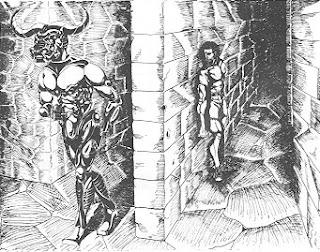
is another one of the greatest hero-versus-monster tales of all time and the Sir Gawain story

---well, let's just say it's what happens when one of King Arthur's knight gets into a beheading contest with a Green Knight!! A really and thrilling story. Don't miss them!!!
We also have another comment from Melanie, my coworker. Here's what she said--and I don't think Bill will be happy about it!
Just goes to show, you can't trust boys! Bill, Bill, Bill . . . I'm at a loss to understand how you can spell miscellaneous right and get scissors so very wrong. :) Hmmm, perhaps those short words are trickier for you than the long ones.
Can't trust boys, huh? Isn't that gratitude for you? After we posted her comments and everything. Melanie's referring to Bill's post of 1-30-08, Tales of Brave Beowulf and Other Miscellaneous Nonsense. So he misspelled "scissors"--are you going to take that, Bill? Better watch out, Melanie, because he is no longer just plain Bill but Bill Kung-Pow, the Kung Fu Librarian! Here he is with his Flashing Book Holders of Kung Fu! Don't say I didn't warn you!
Don't say I didn't warn you!
Until later, dudes,
Carl




















